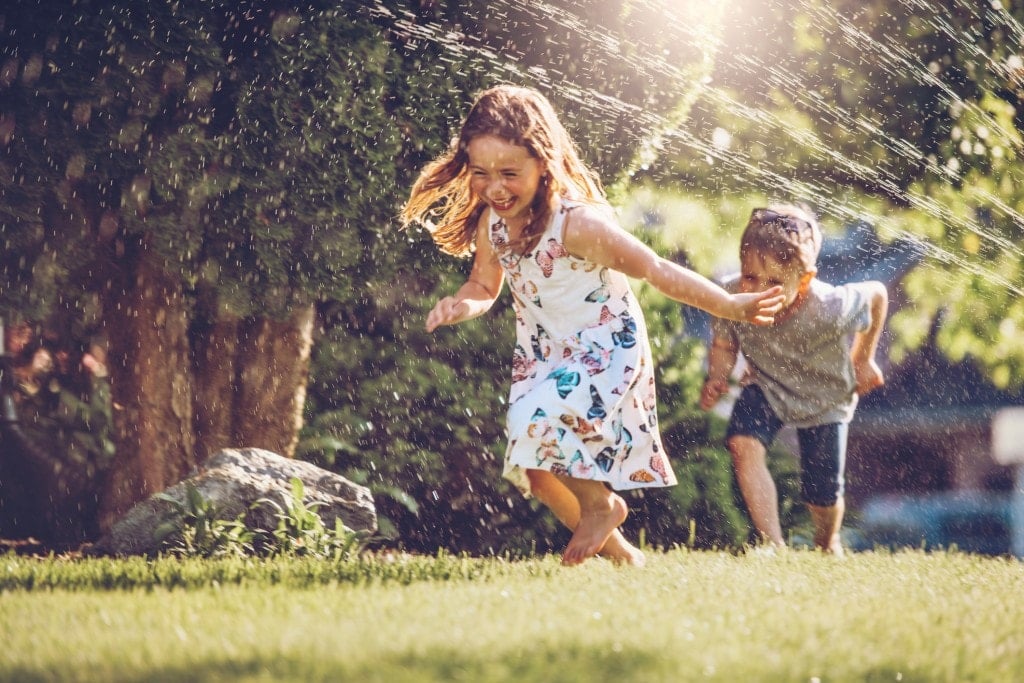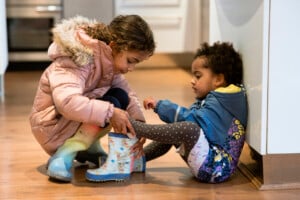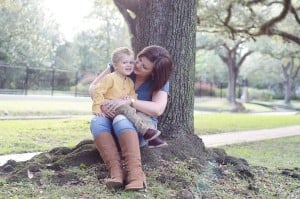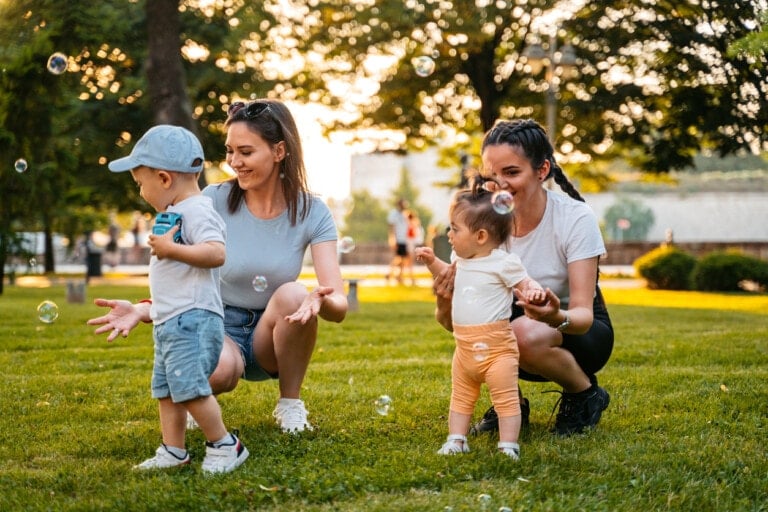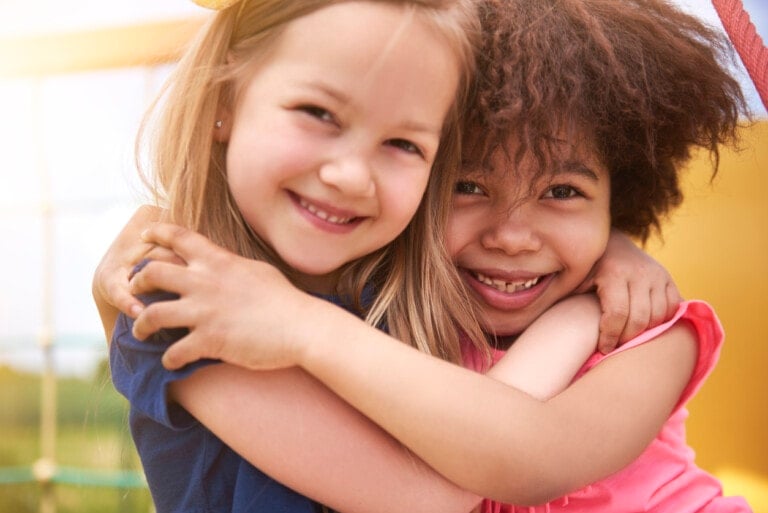Come on. Admit it. When the kids are not home, you do it too. Throwing away some of the plastic junk that constantly litters the floor brings a certain thrill and satisfaction, knowing that the kids will never miss it. Birthdays, holidays, and random trips to Target or the local thrift store can create piles of toys for the kids to sort through and manage. Then there’s the “I have to have it, or I will die” scenario that is quickly replaced with “I played with it for one day, and now it’s boring.” It’s a never-ending cycle. But one that could end if we focused more on our kids playing outside more.
Why Playing Outside Beats Playing With Toys
Toys. Love them or hate them, there is a better way for children to entertain themselves. Playing outside is better than any toy money can buy.
1. Playing outside involves all senses and activates the brain.
When playing outside, children have opportunities to feel the heat, cold, and wind, to hear birds, other animals, and the delightfully loud laughter of playmates, to touch and hold items with a variety of colors, textures, and weights, and to see a multitude of colors, variations of light, shapes, and landscapes. Outdoor play also builds skills like balance, agility, and spatial awareness as children run, jump, and climb over various terrains.
2. The outdoor environment is constantly changing.
Outdoor play allows children to experience the changing seasons, a variety of weather, and the shifting plant and animal life throughout the year.
3. You can play outside with others or by yourself.
A child may be content to spend hours watching ants bring food into their home, while others prefer outdoor games involving hide and seek, chase, or group scavenger hunts.
4. Playing outside promotes an all-around healthier, happier child.
“Forest bathing” is an incredible way to increase the health and happiness of children. According to forestryengland.uk, “this Japanese practice is a process of relaxation known in Japan as shinrin yoku. It is the simple method of being calm and quiet amongst the trees, observing nature around you while breathing deeply can help both adults and children de-stress and naturally boost health and wellbeing.”1
5. Playing outside allows a child to find freedom and creativity.
Last Child in the Woods: Saving Our Children from Nature-Deficit Disorder author Richard Louv says, “In nature, a child finds freedom, fantasy, and privacy: a place distant from the adult world, a separate peace. Nature inspires creativity in a child by demanding visualization and the full use of the senses. Nature—the sublime, the harsh, and the beautiful—offers something that the street or gated community or computer game cannot. Unlike television, nature does not steal time; it amplifies it. Nature offers healing for a child living in a destructive family or neighborhood.”
6. Playing outside builds community.
Playing outside naturally encourages play with others. Whether it’s a game that uses an outdoor toy like a ball, tag, hide and seek, or even simply exploring together, children can expand their immediate circle of playmates and invite others into their games.
7. Outdoor play builds body confidence.
When a child experiences the great outdoors, they get the constant opportunity to improve upon skills. Whether it’s throwing a rock further across the creek or field than the day before, climbing higher in a tree, spotting three new birds, making three free throws instead of two, or learning how to do a cartwheel, children get the chance to improve in a natural, low-pressure setting.
8. Playing outside integrates exercise.
Children run, jump, climb, walk, scoot, skip, leap, squat, throw, and lift when outside. An outdoor landscape provides nature’s perfect gym for children to experience and explore.
9. Outdoor play is essential to child development.
A freeforestschool.org article by Jennifer Welch explains this perfectly. “How does outdoor play support this important process in brain and body development? Experiences and movement! Repeatedly throwing rocks in the water builds physical strength and mental connections. For example, is one arm or two required to get a rock to the water? Which arm throws better or farther? Large versus small, and how that equates to how heavy a rock feels. Once throwing becomes automatic through repetition, the brain starts to make connections regarding higher-level concepts such as rock weight and splash size.”
“Next, a child might compare the differences between sticks and rocks. Sinks or floats? These are the building blocks of future learning. Each experience is a stepping stone to the next learning moment, and children need this valuable time to take in as much as the brain needs. So next time you visit the forest with a child, take a step back and watch. Let your little ones spend twenty minutes jumping in the same puddle or go back and forth over a fallen log. The body is teaching the brain, over and over again! It’s critical work.”
10. Spending time in nature can bring peace to the brain.
A study at the University of Illinois shows that children with ADHD demonstrate greater attention after a 20-minute walk in a park than after a similar walk in a downtown area or a residential neighborhood. The study, conducted by child environment and behavior researchers Andrea Faber Taylor and Frances E. Kuo, suggests that “natural settings can benefit everyone, even children (and adults) who have not been diagnosed with ADHD.”2
Playing outside has multiple benefits for children of all ages. When planning your week, seek out new outdoor spaces to explore together. Sometimes prioritizing experiences over objects is the best thing you can do for your child. Here’s to fewer toys and more healthy, happy families.













